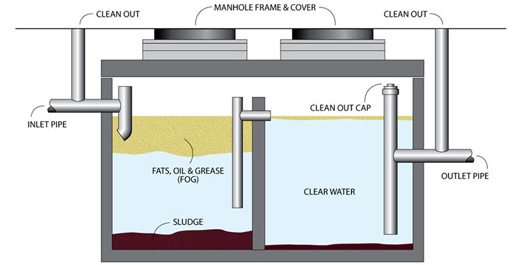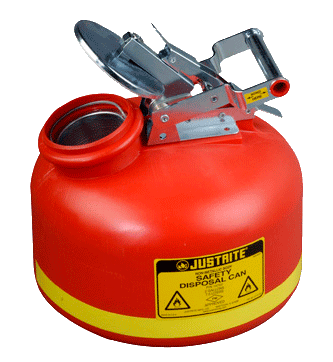Exactly How Liquid Garbage Disposal Works: A Thorough Summary of Techniques and Technologies Employed

Summary of Fluid Waste Kind
The intricacy of fluid waste kinds demands a thorough understanding of their features and ramifications for disposal. Fluid waste can generally be categorized into several types, including industrial, metropolitan, agricultural, and harmful waste. Each classification shows unique properties, needing certain administration methods to alleviate ecological and health and wellness dangers.
Industrial liquid waste stems from producing processes and usually has a range of contaminants, such as heavy steels, solvents, and natural substances. Metropolitan fluid waste, primarily consisting of wastewater from families and business facilities, includes raw material, nutrients, and virus (industrial wastewater treatment). Agricultural fluid waste, consisting of overflow from ranches, may include plant foods, chemicals, and pet waste, positioning threats to water quality and environments
Unsafe fluid waste is defined by its toxicity, reactivity, or prospective to trigger injury. This group consists of materials like acids, bases, and specific chemicals that necessitate rigid handling and disposal procedures. Understanding these varied liquid waste kinds is vital for developing reliable disposal approaches and ensuring compliance with environmental regulations. Proper category and characterization are vital for implementing suitable treatment techniques and reducing the damaging effect on public wellness and the environment.
Physical Therapy Approaches

Screening is the initial step, where larger fragments and particles are eliminated from the fluid waste making use of screens or grates. In sedimentation containers, heavier particles clear up at the bottom, creating a sludge layer, while the clarified fluid can be further treated.
Purification is an additional necessary method that includes passing the liquid with permeable products, such as sand or membranes, to catch smaller sized particles. This action improves the high quality of the fluid, making it suitable for succeeding treatment procedures.

Chemical Treatment Strategies
Chemical treatment methods are important for properly taking care of liquid waste, especially in dealing with dissolved and colloidal impurities that physical approaches may not sufficiently get rid of. These methods utilize various chemical representatives to counteract, precipitate, or change dangerous substances right into much less hazardous kinds.
One common technique is coagulation and flocculation, where chemicals such as alum or ferric chloride are included in advertise the aggregation of put on hold fragments. This process improves sedimentation, permitting for easier elimination of the resulting link sludge. In addition, oxidation procedures, utilizing find more agents like chlorine or ozone, are utilized to damage down complicated organic compounds and microorganisms, rendering the waste much safer for discharge or more treatment.
Neutralization is another vital strategy, which adjusts the pH of acidic or alkaline waste streams to neutral levels, protecting against prospective injury to downstream systems and the environment. In addition, progressed oxidation processes (AOPs) use mixes of oxidants and ultraviolet light to deteriorate consistent toxins, achieving a higher level of therapy performance.
Biological Treatment Processes
Biological treatment procedures play a crucial role in the monitoring of liquid waste by making use of microorganisms to decompose raw material and decrease pollutant degrees. These procedures can be broadly categorized right into anaerobic and cardiovascular therapies, each using details microbial communities to achieve effective waste deterioration.
Cardio therapy entails the use of oxygen to facilitate the break down of organic materials by microorganisms. This process is typically implemented in triggered sludge systems, where aeration storage tanks supply a helpful setting for microbial growth, resulting in the oxidation of organic toxins. The resultant biomass can be divided from treated effluent through sedimentation.
In contrast, anaerobic treatment takes place in the absence of oxygen, depending on different germs to break down natural issue. This method is particularly beneficial for high-strength waste, as it produces biogas, a renewable resource source, while decreasing sludge manufacturing. Technologies such as anaerobic digesters are frequently used in municipal and industrial applications.
Both cardio and Visit Your URL anaerobic biological treatments not only lessen the ecological effect of fluid waste however likewise assist in source recovery, making them necessary parts of sustainable waste monitoring methods. Their performance, efficiency, and adaptability support their extensive execution throughout various fields.
Arising Technologies in Disposal
Innovative techniques to liquid waste disposal are rapidly evolving, driven by developments in innovation and an enhancing focus on sustainability. Among these arising innovations, membrane layer bioreactors (MBRs) have actually gained grip for their capability to integrate biological therapy with membrane layer purification, resulting in high-grade effluent that can be reused in numerous applications. MBRs allow smaller sized impacts and extra efficient procedures contrasted to typical systems.
Another appealing advancement is using anaerobic food digestion integrated with nutrient recuperation innovations, which not only deals with fluid waste yet additionally produces biogas and recuperates valuable nutrients like nitrogen and phosphorus. This double benefit enhances resource efficiency and lowers environmental effect.
Furthermore, progressed oxidation processes (AOPs) are being adopted for the destruction of intricate organic toxins. These approaches make use of effective oxidants and drivers to damage down contaminants at the molecular degree, supplying a very effective solution for tough waste streams.
Additionally, the integration of expert system and artificial intelligence in waste monitoring systems is enhancing operational effectiveness and anticipating maintenance, bring about reduced costs and improved ecological compliance. These modern technologies reflect a considerable shift towards even more sustainable and effective fluid waste disposal techniques.
Verdict
Finally, effective liquid garbage disposal demands an extensive understanding of various methods and modern technologies. The assimilation of physical, chemical, and organic treatment techniques makes certain the efficient administration of varied waste types. Furthermore, the emergence of innovative innovations boosts treatment efficacy and advertises sustainability in waste monitoring practices. By continuously progressing these approaches, it becomes possible to deal with the expanding obstacles connected with liquid waste, ultimately adding to ecological protection and resource recovery.
Fluid waste disposal is a critical aspect of ecological monitoring, requiring an extensive understanding of various techniques and modern technologies tailored to different waste kinds. Liquid waste can generally be categorized into numerous kinds, including industrial, community, agricultural, and harmful waste. Agricultural fluid waste, consisting of drainage from ranches, might include fertilizers, pesticides, and pet waste, posturing risks to water high quality and ecosystems.
Numerous physical treatment techniques play a vital role in managing fluid waste successfully - industrial wastewater treatment.In final thought, effective fluid waste disposal necessitates a thorough understanding of various methods and modern technologies